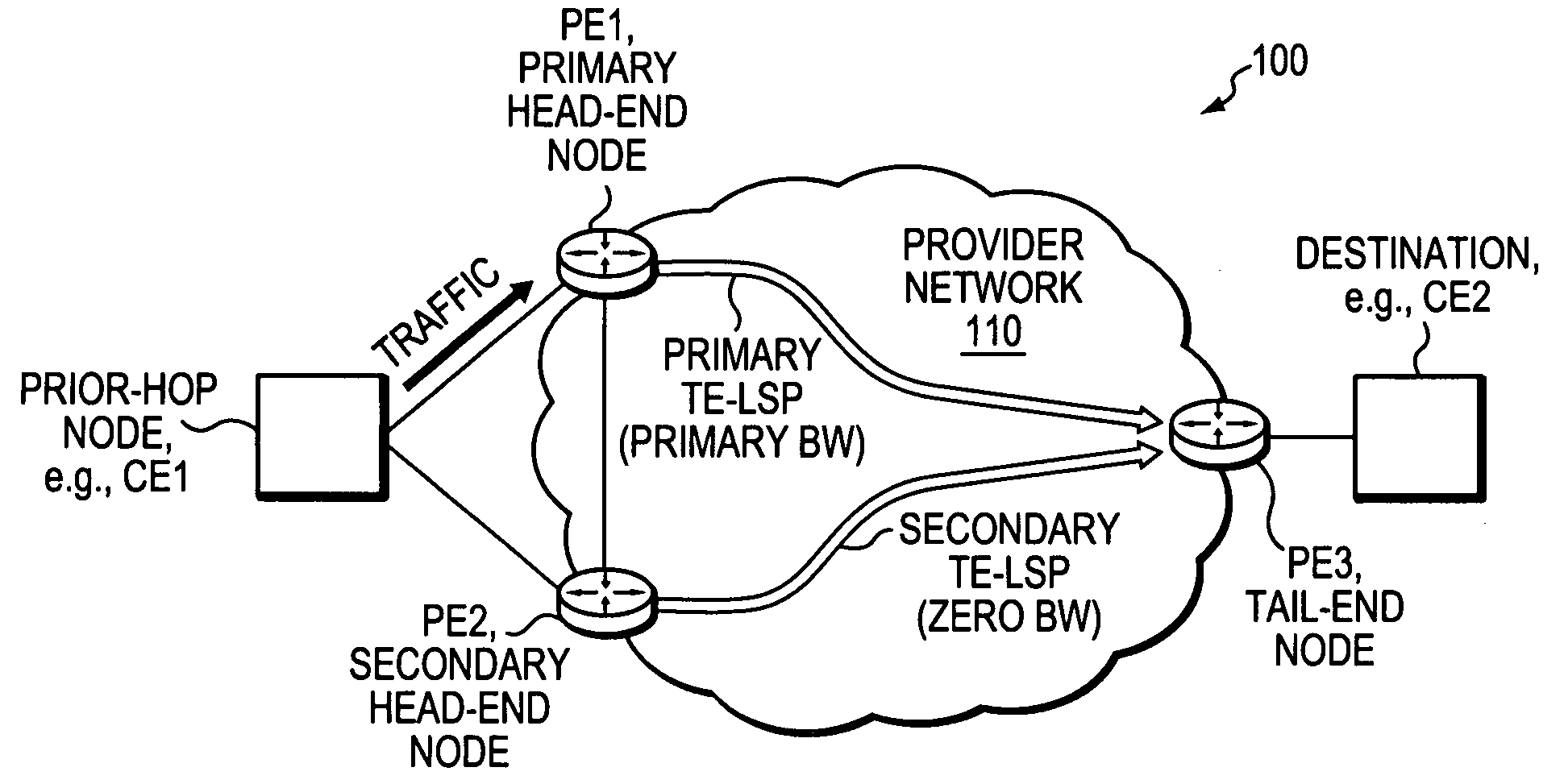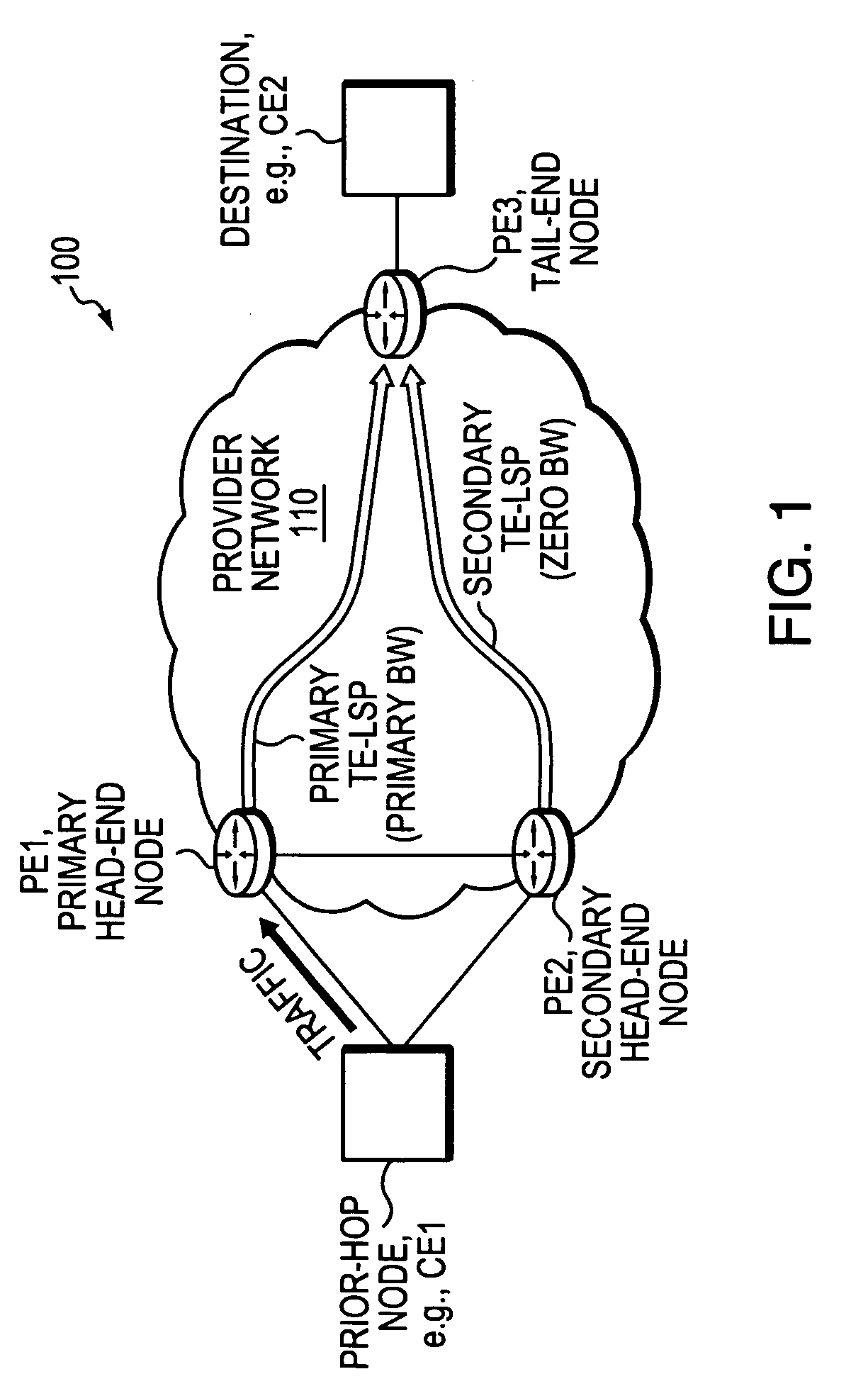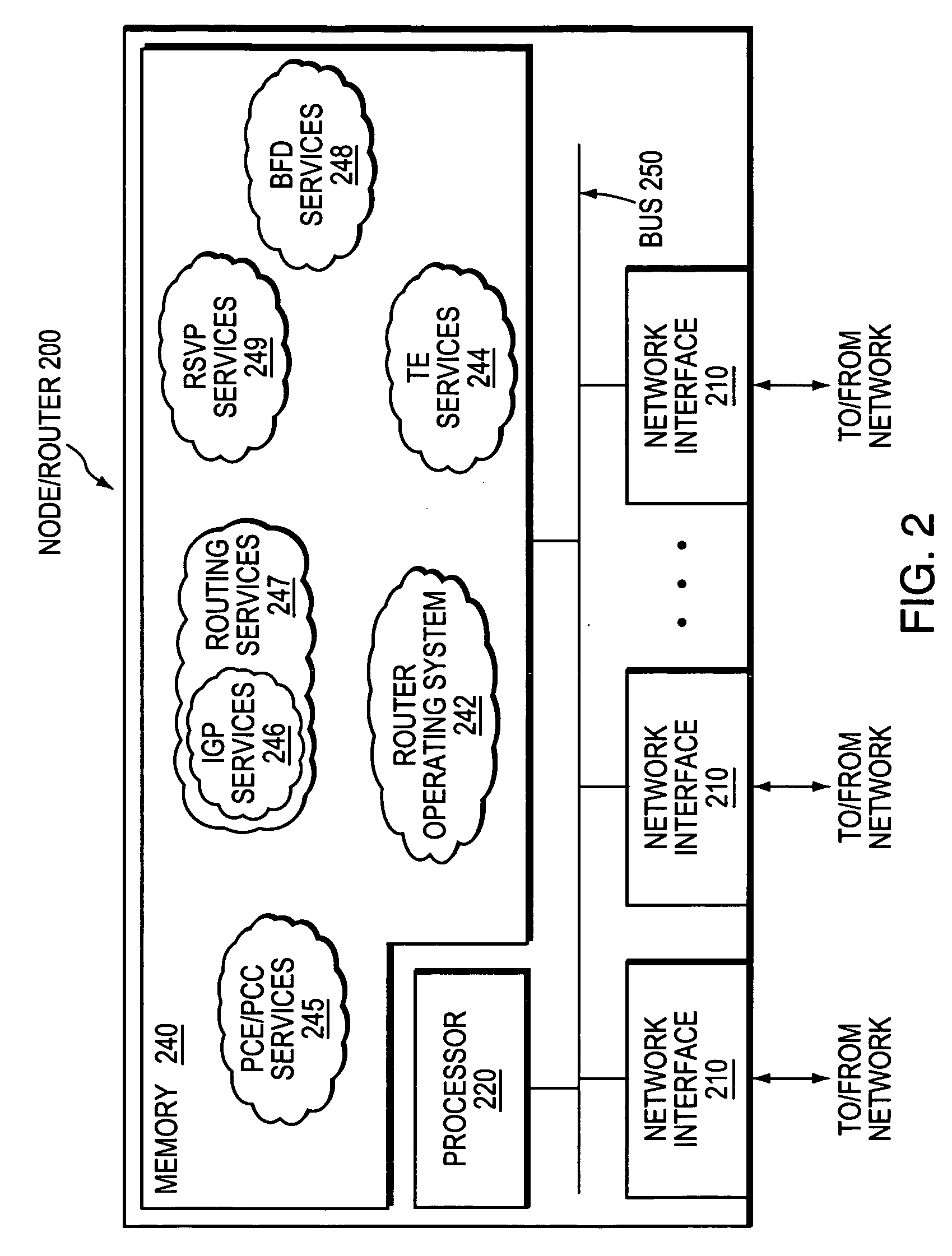Technique for fast activation of a secondary head-end node TE-LSP upon failure of a primary head-end node TE-LSP
- Summary
- Abstract
- Description
- Claims
- Application Information
AI Technical Summary
Benefits of technology
Problems solved by technology
Method used
Image
Examples
Embodiment Construction
[0037]FIG. 1 is a schematic block diagram of an exemplary computer network 100 illustratively comprising edge devices (provider edge routers) PE1 and PE2 interconnected to PE3 by a provider (core) network 110 (e.g., having one or more links and provider routers, not shown). PE routers PE1 and PE2 may be configured as redundant connections to the provider network 110 for a “prior-hop” node to the PE routers (i.e., one hop prior to the PE routers), such as a customer network edge device (CE1). Example prior-hop routers may include, e.g., Asynchronous Transfer Mode (ATM) switches, media gateways (e.g., for Voice over IP, “VoIP,” Video on Demand, “VoD,” etc.), etc. PE3 may be interconnected to one or more nodes, e.g., destination nodes, such as a CE device CE2. Those skilled in the art will understand that any number of routers and nodes may be used in the computer network, and that the view shown herein is for simplicity. Those skilled in the art will also understand that while the pre...
PUM
 Login to View More
Login to View More Abstract
Description
Claims
Application Information
 Login to View More
Login to View More - R&D
- Intellectual Property
- Life Sciences
- Materials
- Tech Scout
- Unparalleled Data Quality
- Higher Quality Content
- 60% Fewer Hallucinations
Browse by: Latest US Patents, China's latest patents, Technical Efficacy Thesaurus, Application Domain, Technology Topic, Popular Technical Reports.
© 2025 PatSnap. All rights reserved.Legal|Privacy policy|Modern Slavery Act Transparency Statement|Sitemap|About US| Contact US: help@patsnap.com



